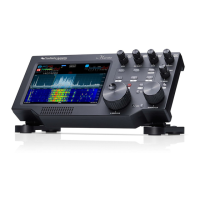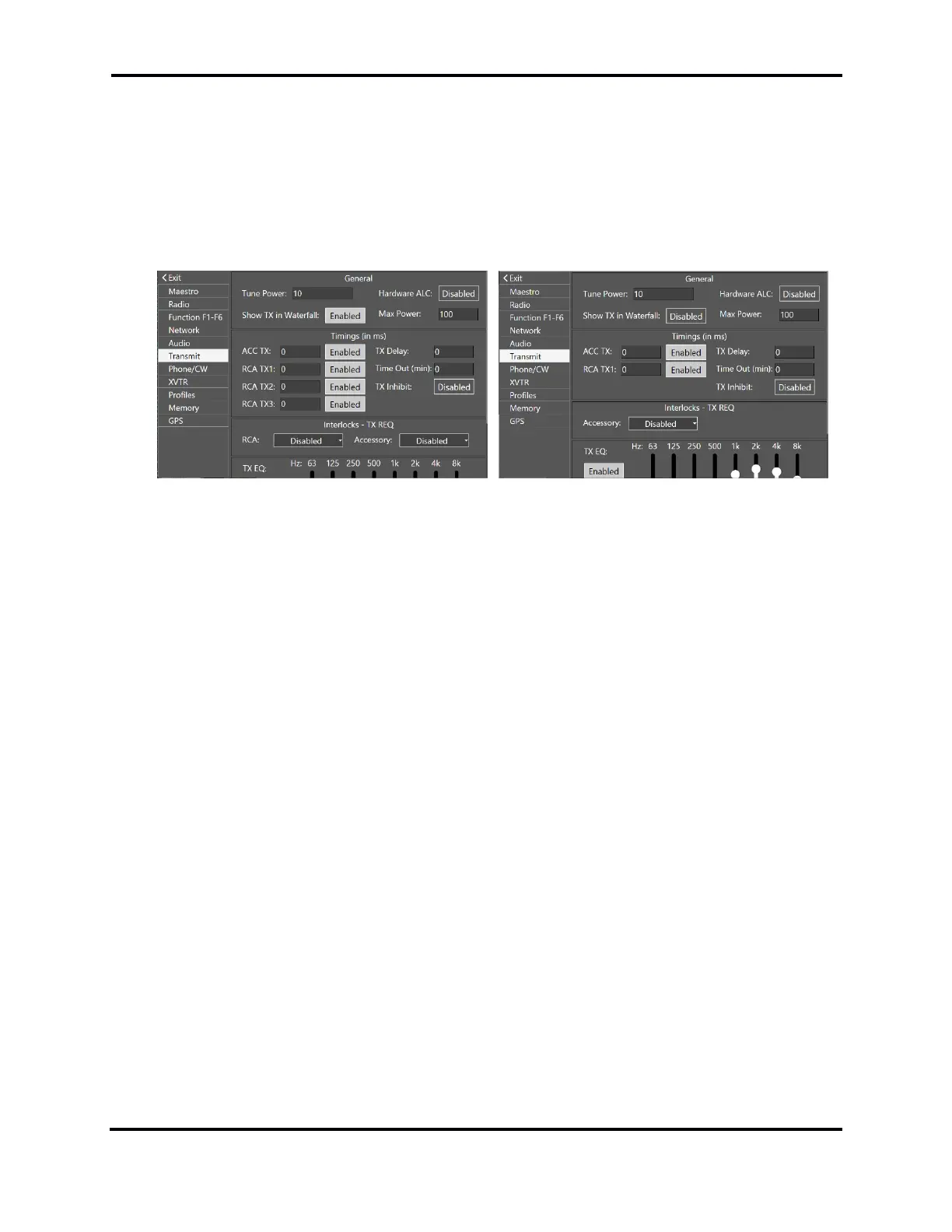FLEX-6000 Signature Series – Maestro User Guide
Page 110
Copyright 2019 FlexRadio Systems. All Rights Reserved.
26 HOW TO CONNECT AN EXTERNAL AMPLIFIER
The FLEX-6000 has hardware interfaces for connecting an external power amplifier. There are four
PTT outputs on the FLEX-6700 and FLEX-6500 and two outputs on the FLEX-6300, each with
independently configurable time delays, a transmit hold-off input for amplifiers that have QSK hold-
off outputs, and a standard zero to negative four Volt hardware ALC input. These interfaces are
controlled from the Transmit tab in the Maestro Main Menu. (Left: FLEX-6700/6500 Right: FLEX-
6300)
On the FLEX-6700 and FLEX-6500 there are four PTT outputs. Three are RCA jacks on the rear panel,
labeled TX1, TX2, and TX3. The FLEX-6300 has one RCA jack labeled TX. On each of the radios there
is an output on Pin 11 of the Accessory connector on the rear panel as well. These outputs are
isolated, and each one can have a specific delay. Some users will want to utilize the delay settings to
sequentially switch external equipment.
For external amplifier use, the delay should be set to zero for any output that keys the external
amplifier.
The TX Delay setting can be used if the external amplifier has slow T/R relays and requires a longer
time between PTT and RF Emission. Unless you are noticing problems with the radio emitting RF
before the amplifier has switched to transmit mode, you should leave the TX Delay set to zero.
The TX Delay will have a negative impact on QSK operation. If the intent is to operate QSK then Delay
should be set to zero.
The Interlocks settings are used for amplifiers that have a hold-off output for QSK CW. There are two
interlock inputs. One is an RCA jack on the rear panel, and the other is Pin 13 of the Accessory
connector on the rear panel. On the FLEX-6300 this is only available on the Accessory connector
If your amplifier does not have one of these outputs, or you do not use it in your station, leave these
settings disabled. If you need to use the hold-off, select Active High or Active Low to enable the
interlock and set the proper polarity of the signal provided by the amplifier.

